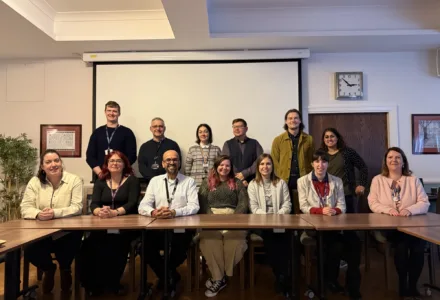Have you ever heard the tale of G.R. Stephenson’s behavioural study into the learned responses of Rhesus monkeys? From posts on Facebook to featuring in TED talks, it’s often-cited as an example of what monkeys can teach us about human behaviour.
The story goes, Stephenson studied a number of monkeys as they attempted to climb a ladder to grab a bunch of bananas at the top. Sounds simple enough – monkeys like bananas, right? But as with most of what you find on the internet, the situation was more complicated than it first appeared.
Whenever a monkey climbed the ladder to reach the fruit, the scientists would spray it with jets of water, plus all of his friends on the ground too. As time went on, not liking the outcome of being soaked with cold water, the monkeys in the group would react to one of their numbers attempts to climb the ladder by attacking them, thus preventing the whole group from receiving the cold-water treatment.
But it didn’t end there.
The next stage of the study involved exchanging a member of the existing group, one at a time, for a new monkey. When the new monkey joined the group and wanted to grab the bananas, he was also attacked and prevented from reaching them. Eventually, when all the monkeys had been changed, the practice of attacking any monkey that tried to climb the ladder was still observed in the behaviour of the new group, despite none of them ever having experienced a soaking. The monkeys had learned that this is the way things are done around here.
It turns out the “Five Monkey Study,” as it has come to be known, is just a myth. Nevertheless, it makes a great analogy for how we approach business cultures in the workplace.

Data Monkeys vs Data Culture
It’s a common occurrence for people’s eyes to glaze over when the word “data” is mentioned, however data in its broadest sense doesn’t just mean number crunching and statistics. Data is all around us in the form of customer information, staff information, finances, news articles, user feedback and pretty much anything we find in the more trustworthy areas of the web.
In terms of data within your business, how do you use it? Do you do what you have always done, because that is how you have always done it? If so, you may have a “data monkey” culture! A prime example of this is continuing to gather data, or attempting to gather data, based on old requirements, such as out of date questionnaires or anachronistic pieces of information such as fax numbers and old product codes. However, by stopping to think about forms to be completed, processes to be followed or questions to be asked, we can identify any areas where our data collection just doesn’t make sense. Because you can bet your bottom dollar that if the question asked doesn’t make sense, then the answer won’t either.
With each process of gathering, storing, using and sharing data, there are various behaviours that are helpful or unhelpful in working towards the goal of a healthy data culture. In order to determine if you have a good (monkey free) data culture, here are 4 questions to ask of your business:
- Do you gather, store, use and share data as effectively as possible?
- Does your business have the data literacy skills it needs in order to use and analyse data at an appropriate level? By this I don’t mean can you code or use statistical packages, but can you take the raw figures or data and use analysis to draw meaning from the information they hold?
- Does your business use data to help it to make evidence-based decisions?
- Is the use of data embedded into all elements of your business? For example, do you take into account all of the forms of data that are relevant to you and your business, such as market information, customer information, staff feedback and any relevant open data sources.

Gathering, Storing and Sharing Data
Tackling point number one can take some time and soul searching for your business. The old adage of “You only get out what you put in” could not be truer than when it comes to data collection. How many of us have ever been in the position of rushing to complete a form and scribbling N/A, N/A, N/A in all of the boxes that we either don’t know the answer to, or can’t be bothered to answer? How many of us have been on the frustrating flip-side of this and been given the task of reviewing these forms to gather information?
Once you have gone to great lengths to gather great data, careful consideration needs to be given to how the data will be stored. Some people thrive on post-it notes and scraps of paper, some people love a good spreadsheet, and for some a full-on data management system is needed. Whatever your preference, you need to consider: A) is it secure? And B) how easy is for those that have a genuine need to input and access the information?
For example, Post-it Notes and binders forming a system that only you can understand and which are stored in a locked drawer are fine until you go off on holiday, or are off sick. Spreadsheets are a great way of storing raw data, but how many is too many before the computer-based filing system gets too big to handle? Also, if they are password protected and different people have different access permissions, is this a help or a hindrance?
As well as access issues, the extraction of the data needs to be considered – can it be downloaded, pivoted or printed in ways which allow meaningful engagement with the information provided?
Using data
Data gives us information, which allows us to use analysis to create meaning. Once we have our data, the worst thing we can do with it is leave it languishing in a file somewhere, never to see the light of day. If we are going to the trouble of collecting and storing it, then it needs to earn its keep. It is important to review the data held and to think critically about how useful it is to our business. Can the data help us to answer any of the business questions we have about customer segments, new developments, making improvements or savings? It might be that the data you hold only tells part of the story, but that with a few tweaks to collection methods or combined with other (potentially open) data sources, a bigger picture can be revealed.
Related Posts

Visits to BGU from Innovate UK

LORIC Wraps Up Successful SED Project

Innovate UK’s East Midlands Knowledge Exchange Forum hosted on BGU campus!

Understanding the Economic Impact and Future Potential of Greater Lincolnshire’s Sport, Physical Activity & Leisure Sector

LORIC Wins Venue of the Year Award

Digitising the Archive of the 20th Century Philosopher John Macmurray
